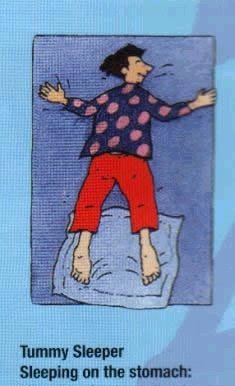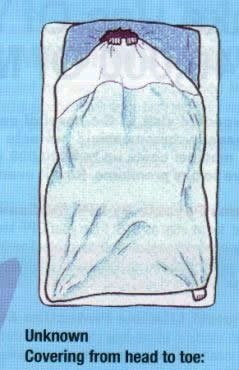2. Always keep in mind that the employer wants to know what you are going to do for them, with that you should always stay/be positive.
3. Don't feel as though you need to literally answer the question.
4. Be brief in your response, yet be prepared to expand should you be asked to do so, or should you judge it a good opening for a more complete response.
5. Be positive in your responses, even when the question is negative.
To help you get started, here are 10 probable questions that you will be asked during the interview process, along with some suggestions on how to answer each.
1. Why did you send me your resume?
Suggestions: Emphasize what you can do for them versus what you want from them. Shape your response along the lines of, "I sent my resume with the belief that my skills of A, B and C, along with my experience of X, Y and Z, would prove a valuable resource to your company."
Example: "I sent you my resume, highlighting my technical talents in IT along with my managerial experience, confident that you would see me as a valuable resource. Allow me to be more specific as I learn more about your immediate needs."
2. Tell me about yourself...
Suggestion : It is tempting, with such a question, to tell your life story. Resist this temptation. Respond with a quick overview highlighting your skills and accomplishments, and flavor your answer with a comment about your style and personality.
Example: "My career is a balance between the technical and managerial. Early in my career, I focused on providing technical solutions to business problems, and, more recently, on providing solid leadership in the re-engineering of the IT department. Beyond my many skills and experience, I believe my success is due largely to my ability to quickly engage others, motivate team members and clearly communicate."
3. How can you help us?
Suggestion: If there are identifiable corporate needs, than address them; if not, then be careful not to go out on a limb saying you can do certain things that may not be of interest. Rather, turn the question and response from what you CAN do, to what you HAVE done.
Example: "Not knowing the particulars of your current situation, allow me to share with you some recent successes which are representative of my talents. (give an example and quantify) With that said, may I ask how that begins to address your needs?"
4. What are your strengths?
Suggestion: Be selective of your many strengths and choose three or four that directly relate to the position or identified corporate needs. Sometimes a mere listing of skills has high impact and is most effective. Yet, be prepared to expand and give examples if prompted.
Example: "Three strengths or skills quickly come to mind: namely, 1, 2 and 3. (pause) I mention these particular skills or strengths because they have served me well throughout my career and, I believe, would prove valuable to your company as you address issues of A, B and C."
5. What are your weaknesses?
Suggestion: Minimize your response. Even though the interviewer might ask for "weaknesses," give just one at a time. Make it realistic, yet don't give ammunition to fire back at you. Mention some "weakness" that in a different context might be considered a strength.
Example: "I'm tenacious and I hate to give up, yet I do realize the value of time and the importance of not taking decisions to halt an effort as a personal failure."
6. What types of problems do you like to deal with?
Suggestion: Not all problems are negative. Sometimes it might involve fixing something that is broken, although it could also involve capitalizing on an opportunity. Reflect for a moment on the position and why that position exists, then reference some responsibilities and activities in which you thrive and which you believe would contribute to that company's productivity, grow and profit.
Example: "I enjoy a mix of problems, both the quick daily problems that I can address based on my knowledge and experience, as well as larger problems that involve input from many sources, careful analysis and strategic thinking. My preference, too, is toward quantitative issues that can be resolved in a matter of weeks."
7. How do you motivate others?
Suggestion: Think for a moment about human behavior and your philosophy of managing; then comment on your style of encouraging and supporting others toward completing a common goal. Be prepared with concrete examples.
Example: "Ultimately, a person can only motivate himself/herself. The role of the manager is to understand what motivates individuals and provide the support for that person to be successful. It takes patience in listening and understanding others, an expressed confidence in the person and a reinforcement of that person's progress toward a goal."
8. What would your boss say about you?
Suggestion: Although we have all been criticized from time to time, be positive and highlight some of your qualities and strengths. If your relationship with your boss is strained or negative, generalize the response to bosses you have had over the years and the compliments that they have paid you. Once again, choose comments that reinforce your candidacy for the position for which you are interviewing.
Example: "I've had the good fortune of having bosses who are very supportive of my work. They have commonly complimented me on my analytical and problem-solving skills. In addition, they recognize my leadership abilities and willingness to push myself and others toward concrete results."
9. What do you hope to be doing in three years?
Suggestion: Indicate that you would be first looking to do an outstanding job in the position under discussion. As to the future, show your ambition, yet be realistic and avoid mentioning positions by title. Be careful not to set yourself up as a competitor with the interviewer.
Example: "First, let me say that I would certainly look forward to being part of your team and am confident that I could do an outstanding job. As to the future, I think my success would bring other responsibilities. So, regarding your question, I would see myself playing an increasingly important role in the company's leadership and growth."
10. Why should I consider hiring you over other candidates?
Suggestion: Emphasize that, while not knowing the other candidates, you are confident that you have the skills, experience and demonstrated accomplishments that have prepared you for such a role and that assure your future success. This question provides a perfect opportunity to close by asking for feedback and the interviewer's full support in moving forward.
Example: "I have been in your position of making hiring decisions, and I have always asked the question, 'Who is skilled, motivated and most likely to fit with the team?' From our discussion, I hope I have clearly conveyed my skills and experience, and my strong desire to be part of your team. Bottom line, I am confident I can get the job done for you in a timely and profitable manner."

















